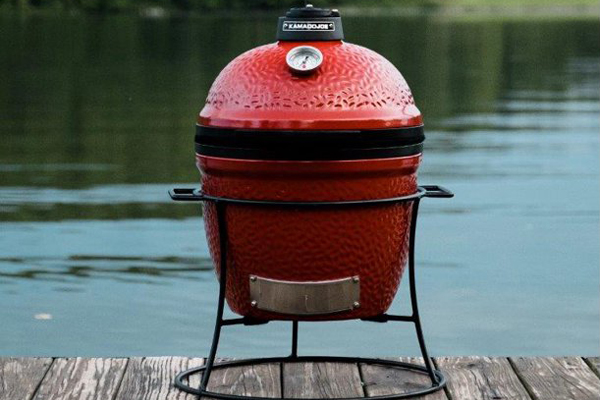
If you’ve bought a Green Egg grill or have been thinking of buying one but aren’t quite sure if you like it, then let us present you with the Joe Jr. Portable Charcoal Grill, a great alternative from Kamado that you might enjoy. While grills are certainly expensive, we think you’ll appreciate this one, especially given the deal from Walmart bringing it down to $299 from $500, which is over a whopping $200 in savings and almost half off.
For starters, one big thing that sets the Joe Jr. apart from Green Egg is that the internal cooking space of Joe Jr. is bigger, with an internal cooking temperature of 13.5 inches. This makes it perfect for larger families of more than three or four people, compared to the Green Egg, which is probably best served for two people or so. Also, one big advantage of the Joe Jr. is that it essentially comes completely preassembled. You only need to take off some plastic wrapping, and you’re ready to cook, whereas the Green Egg does require some assembly, albeit minimal.
One big standout feature, though, is the fact that the Joe Jr. has a carrier that lifts the whole grill off the ground, which helps keep any heat away from tiles and potentially cracking them. This may not be a major consideration if you don’t cook on a patio or somewhere where the ground can be damaged, but it’s a nice addition. This extra height also means that it’s much closer to you, so if you’re a taller person, you might appreciate having the Joe Jr. closer to you than the lower height of the Green Egg.
Overall, the Joe Jr. Portable Charcoal Grill has a lot of benefits that make it a great alternative to the Green Egg, especially with the deal from Walmart bringing the price of it down to $299 from $500, a huge savings of over $200. Of course, if neither of these is a great fit for your grilling needs, we have found some other grill deals happening today, and also have a primer on Memorial Day grill deals, to get you ready.



